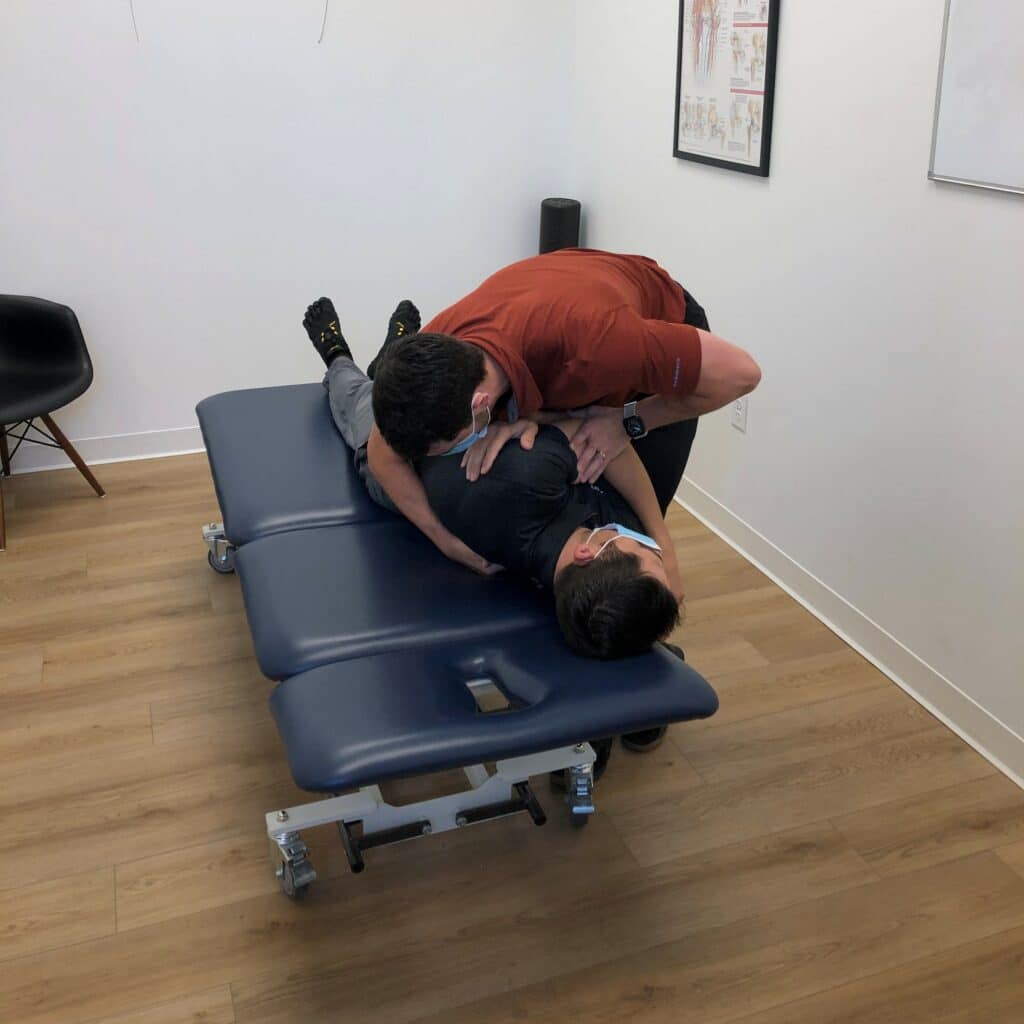
Dr. Hartley adjusts Dr. LoRang.
What’s that Cracking Sound?
The origin of the noise produced during spinal manipulation has been cause for wonder for as long as joints have made noise. Some popular beliefs for the creation of the cracking noise include ligaments snapping, bones cracking, or bubbles collapsing inside the joint.
Research has historically been lacking in its ability to explain the mechanism for the sharp popping noise produced during spinal manipulation. However, in 2015 an experiment was conducted to study this phenomenon. The joints of the fingers were distracted (pulled) until they popped, while being observed under MRI. Researchers discovered that joint cracking occurs via cavity formation.
Cavities in the joint arise when two opposed surfaces resist separation until a critical point when they separate rapidly, causing dissolved gas to come out of solution, and creating a small gas cavity (1). This is known as joint “cavitation.” It’s during this process that the cracking noise is produced.
Not all joint noise is due to cavitation. Some joints, such as your dad’s bad knee, may make similar noise from specific activities. Repetitive, reproducible joint noise occurring with movement typically arises from anatomic structures rubbing past one another. While this sound may be similar to joint manipulation, the origin of the noise differs.
Check out our video on YouTube for examples of what that “crack” can sound like!
What if I don’t hear the pop?
Another common question we often receive is, “Does that popping noise mean I got a good adjustment?”
It’s impossible to determine if a joint underwent cavitation based solely on the sound (2). Therefore, the sound produced doesn’t indicate whether joint cavitation occurred or reflect the success of an adjustment.
Hearing the cracking noise along with feeling the release from an adjustment can act as a placebo. It is believed that the therapeutic benefits of the cracking noise are psychological rather than physiological in nature (2).
We like hearing it just as much as you do! However, sound production during an adjustment isn’t necessary for successful treatment.

Dr. Hartley adjusts Dr. LoRang’s neck.
Is popping my own joints bad for me?
You may have been told that cracking your knuckles is bad for you. But is that really the case? Does cracking one’s knuckles somehow contribute to early joint diseases like osteoarthritis (OA)?
Fortunately for those of us that crack our knuckles, there’s been no evidence that habitual knuckle cracking leads to joint degeneration (1,3). Crack away!
References
- Kawchuk, G. N., Fryer, J., Jaremko, J. L., Zeng, H., Rowe, L., & Thompson, R. (2015). Real-Time Visualization of Joint Cavitation. PLOS ONE, 10(4), e0119470. https://doi.org/10.1371/journal.pone.0119470
- Bakker M, Miller J. Does an audible release improve the outcome of a chiropractic adjustment?. J Can Chiropr Assoc. 2004;48(3):237-239.
- deWeber, K., Olszewski, M., & Ortolano, R. (2011). Knuckle Cracking and Hand Osteoarthritis. The Journal of the American Board of Family Medicine, 24(2), 169–174. https://doi.org/10.3122/jabfm.2011.02.100156
Share this Post

